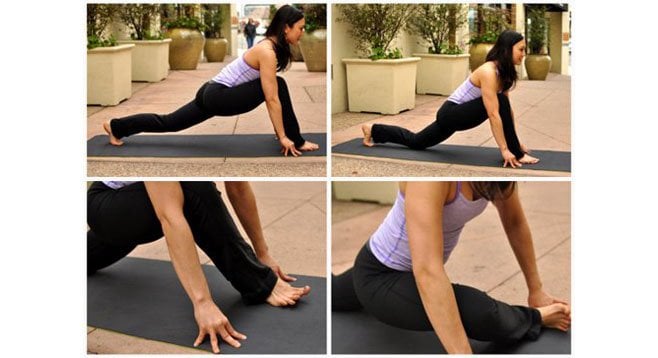 Facebook
Facebook
 X
X
 Instagram
Instagram
 TikTok
TikTok
 Youtube
Youtube

If we want to improve our running gait to be less prone to injury, where do we start?
Posture, posture, posture.
If we want to improve our posture where do we start?
Hips, hips, hips.
What, not shoulders or back? Nope, that’s not our starting point. We tend to think of posture as a “top to bottom” issue but it is also a “front to back” issue and a “side to side” issue.
The hips are the biggest “hinge” in the body but they don’t always get the attention they warrant. If our hips are off, everything is off.
Here’s the sticking point. As with shoes, chairs are a relatively new invention in the course of human evolution. Our bodies evolved over the eons to either stand, squat, or lay down. However, many of us spend hours a day in a chair which plays the devil with our hips.
I’m sitting in a chair right now, for instance.
When it comes to running, the number one hip related issues is splayed feet (like a duck).
How do hips affect the feet? One of the consequences of our sitting culture is that the muscles in the hips shorten and tighten which pulls the entire leg outward. How often do we sit in a chair with our feet, knees, and hips straight? Not often.
Imagine a train on tracks. Everything is lined up to go straight down the tracks. Now imagine if the wheels of the train are slightly angled outward. How long until the wheels are worn down and the we get a train wreck?
It’s the same thing with our legs and feet. When we’re running forward our body is designed to be on rails. The toes point straight, the ankle flexes straight, the knee wants to bend straight, and our hips want to go straight.
If our hips are pulling everything outward, how long until we have a wreck just like the train?
What do we do? First we can become aware of our alignment every time we stand and start to walk. Stand up, point those toes straight and go.
The other easy thing we can do is begin to lengthen those muscles. Pigeon pose is a good place to start. Two minutes of pigeon per leg will help to get those hips back on track.


If we want to improve our running gait to be less prone to injury, where do we start?
Posture, posture, posture.
If we want to improve our posture where do we start?
Hips, hips, hips.
What, not shoulders or back? Nope, that’s not our starting point. We tend to think of posture as a “top to bottom” issue but it is also a “front to back” issue and a “side to side” issue.
The hips are the biggest “hinge” in the body but they don’t always get the attention they warrant. If our hips are off, everything is off.
Here’s the sticking point. As with shoes, chairs are a relatively new invention in the course of human evolution. Our bodies evolved over the eons to either stand, squat, or lay down. However, many of us spend hours a day in a chair which plays the devil with our hips.
I’m sitting in a chair right now, for instance.
When it comes to running, the number one hip related issues is splayed feet (like a duck).
How do hips affect the feet? One of the consequences of our sitting culture is that the muscles in the hips shorten and tighten which pulls the entire leg outward. How often do we sit in a chair with our feet, knees, and hips straight? Not often.
Imagine a train on tracks. Everything is lined up to go straight down the tracks. Now imagine if the wheels of the train are slightly angled outward. How long until the wheels are worn down and the we get a train wreck?
It’s the same thing with our legs and feet. When we’re running forward our body is designed to be on rails. The toes point straight, the ankle flexes straight, the knee wants to bend straight, and our hips want to go straight.
If our hips are pulling everything outward, how long until we have a wreck just like the train?
What do we do? First we can become aware of our alignment every time we stand and start to walk. Stand up, point those toes straight and go.
The other easy thing we can do is begin to lengthen those muscles. Pigeon pose is a good place to start. Two minutes of pigeon per leg will help to get those hips back on track.
Comments